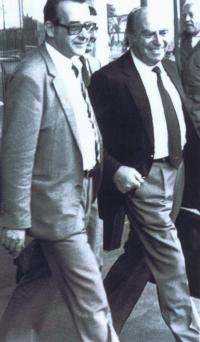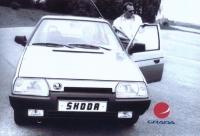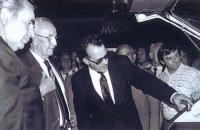To drive is to anticipate
Petr Hrdlička was born on 12 September 1934 in Mladá Boleslav into the family of the director of the local automobile factory ASAP, a predecessor of Škoda. As a child he experienced the times of the Protectorate during which his father had to leave his job at the factory and only narrowly escaped an arrest by the Gestapo during a house search. From 1944 until 1948 Petr Hrdlička studied an elementary school in Mladá Boleslav. Following the communist coup of February 1948 he had to do a one-year apprenticeship in the Škoda factory. After that he was allowed to study at a technical school which he finished in 1953. He then got a job placement at the Research Institute for Motor Vehicles in Prague where he served as an assistant, and where he spent a significant portion of his professional life. Over the years he worked his way up and became an indispensable expert in car design and construction. He participated in the development of Škoda 1000 MB model and already during the 1960s gained international experience by working for the Peugeot and Volkswagen car factories. His life success became a project announced in 1982. It was a new Škoda car with motor placed in the front, which was named after a traditional model of the factory - Favorit. Ever since 1990 when he left the factory, Petr Hrdlička has worked for several Czech and international companies working in the production and sales of cars, tramways and other vehicles.












